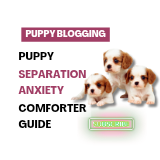Not All Harnesses Are Equal: The Intersection of Well-Fitting Dog Harnesses and Your Pup's Skeleton
- Jan 3, 2023
- 2 min read
Updated: Feb 20
When it comes to choosing the right harness for your four-legged friend, understanding the nuances of your dog's anatomy is crucial. Not all harnesses are equal, and a well-fitting harness that considers your dog's skeletal structure can make a significant difference in their comfort, mobility, and overall health. Let's delve into the relationship between a properly fitting dog harness and your pup's skeleton.


Supporting the Canine Skeleton:
The canine skeletal structure is unique, and a well-fitted harness takes this into account. It provides support to the chest and shoulders without restricting natural movements. Look for harnesses with padded areas that sit comfortably over the bony prominences, ensuring that your dog's skeleton is adequately protected during walks or other activities.
Avoiding Pressure Points:
An ill-fitting harness can create pressure points on your dog's body, potentially causing discomfort and, in the long run, leading to musculoskeletal issues. A harness that conforms to the natural curves of your dog's body, with well-distributed pressure, helps prevent undue stress on specific points, promoting a healthier skeletal posture. Another common problem with poorly fitted harnesses is chafing and skin irritation. Straps that are too tight or rub against sensitive areas can lead to discomfort and even painful sores.
Freedom of Movement:
Dogs love to explore, run, and play. A properly fitting harness allows for unrestricted movement, promoting healthy joint articulation and muscle development. Harnesses that consider your dog's skeletal freedom contribute to a happier and more active lifestyle. An ill-fitting harness can restrict your dog's natural movements, making walks and other activities not enjoyable for them. This can lead to frustration, anxiety, or even behavioural issues such as agitation, reluctance to go for walks, or even aggression can be linked to discomfort caused by an ill-fitting harness.

Correct Sizing and Adjustability:
Every dog is unique, and so is their skeletal structure. Choose a harness that comes in various sizes and offers multiple adjustment points to ensure a customised fit. This adaptability is essential for accommodating the diverse shapes and sizes of dogs, from petite pups to larger breeds, providing optimal support for their individual skeletons. Dogs are clever escape artists, and an improperly fitted harness can provide an opportunity for Houdini-like escapes. If the harness is too loose, your dog might slip out of it easily. Tight harnesses can impede your dog's ability to breathe properly. This is not only uncomfortable but can pose serious health risks, especially for dogs with respiratory issues.

Balancing Comfort and Control:
Striking a balance between comfort and control is key when selecting a harness. The right fit ensures that your dog feels secure without constraining their skeletal movements. This balance is especially important during activities like jogging or hiking, where your dog's skeleton is engaged in various motions.

In the hunt for the perfect dog harness, understanding the intricate connection between the harness and your pup's skeleton is paramount. A well-fitting harness not only enhances comfort and control but also supports your dog's skeletal structure, contributing to their overall well-being. So, the next time you gear up for a walk or adventure with your furry friend, remember that not all harnesses are equal, and the right one can make a positive impact on your dog's skeletal health and happiness.
🌟 Recommended reads....













Comments